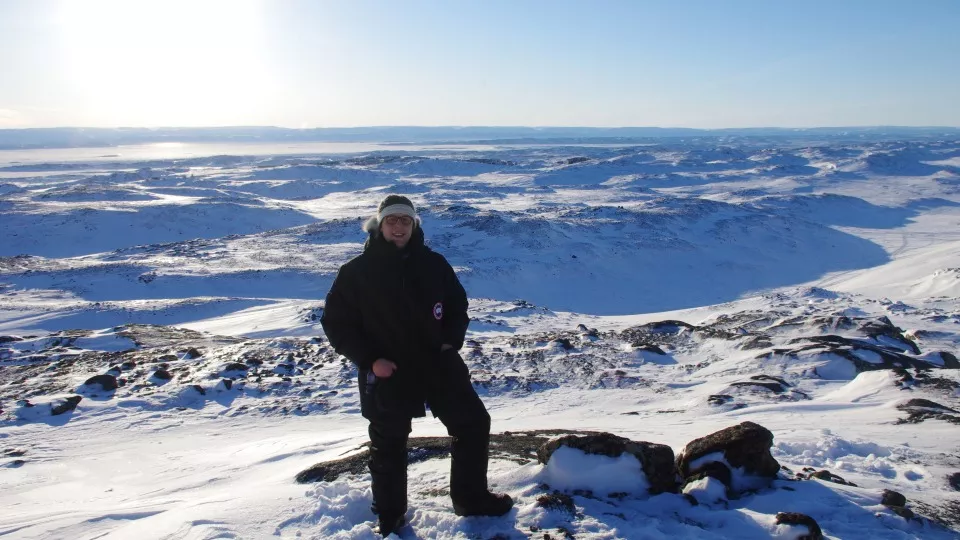The Arctic – the area north of the Arctic Circle – is warming at least twice as fast as the globe as a whole (a recent study showed it could be four times faster). With its tundra and boreal (northern) forests, the region is a major player in climate change. However, predicting more precisely how the Arctic and its ecosystems interact with climate change and affect climate is a difficult nut to crack - there are complex interactions between the atmosphere, soil and vegetation to consider.
In his thesis On the role of terrestrial ecosystems in a changing Arctic, Adrian Gustafson, a PhD student at the Centre for Environmental and Climate Science (CEC) and an associate of the BECC and MERGE research communities, has taken a closer look at the issue. He has obtained interesting results by using the dynamic vegetation model LPJ-GUESS and linking it to a regional climate model (RCA-GUESS).
That boreal forests will continue to play a major role in carbon sequestration in the future – the time horizon Adrian Gustafson has chosen is up to 2100 - is not surprising. Forests act as a large and stable carbon sink under a range of climate change scenarios. It is also known that soil albedo (the reflection of solar radiation into space, which reduces global warming) decreases as the snow-covered bare ground is replaced by trees and shrubs as the tree line shifts upwards as a result of climate change. Reduced albedo contributes to a warmer regional and local climate.
New forest seems to absorb more carbon
What was surprising in Adrian's study, however, was that moving the tree line upwards appeared – when all variables were weighted together – to be positive for carbon sequestration as modelling showed that the new forest absorbs more carbon than is released through decomposition.
“But this is both unexpected and somewhat uncertain”, says Adrian Gustafson.
Adrian Gustafson stresses that many studies suggest that the Arctic, currently with frozen tundra, will become a major source of carbon and methane when the tundra thaws as a result of higher temperatures, and that such a change would be negative for carbon sequestration. That his studies show that a tree- and shrub-covered tundra could be "good news" in that the vegetation would sequester more carbon than frozen tundra, should therefore be interpreted with caution, he says. At the same time, he finds the findings interesting.
“These models look at everything, whereas many other studies have perhaps only looked at one aspect, such as changing albedo or thawing permafrost. The aim of the modelling I've done is precisely to look at how complex systems interact and to quantify which factors will be important as the Arctic warms. That said, there is uncertainty in the models. After all, not all aspects that may be important in the future, such as forestry”, are included.
Adrian Gustafson also stresses that his studies have a longer time horizon than many others.
An upper limit for the tree line movement
Another interesting result of the thesis is that the movement of the tree line up into the mountains (in different scenarios, this is about 0.44-1.16 metres of height per year) has an upper limit.
“The Arctic is nitrogen-poor, and the tree line is held back in our model by a lack of nitrogen supply”, he says, adding that this is also a result that runs counter to conventional wisdom.
“The movement of the tree line is more complex than just being controlled by temperature alone, our model shows.”
Adrian Gustafson had another interesting result when he and colleagues fed the LPJ-GUESS results into a model that calculates chemical reactions in the atmosphere. Today, the Arctic has cleaner air with a small number of particles compared to lower latitudes. As the trees migrate north, more small particles form in the atmosphere - which in turn affects cloud formation and makes it harder for light to travel through the atmosphere. This partly prevents the sun's rays from warming the Earth.
“This is an indirect way that plants affect the Arctic's climate, so it's another aspect to look at in the future”, says Adrian Gustafson.
As the models still contain uncertainties, especially regarding the modelling of tundra, Adrian Gustafson wants to be cautious in his interpretations of the results but calls for further research in this area.
“The Arctic is interesting and a hot spot for global warming. To understand the future, we need to make models like this, based on processes in nature, and keep developing them. It's the only tool we have for estimating what might happen far ahead and over large areas", he says.


